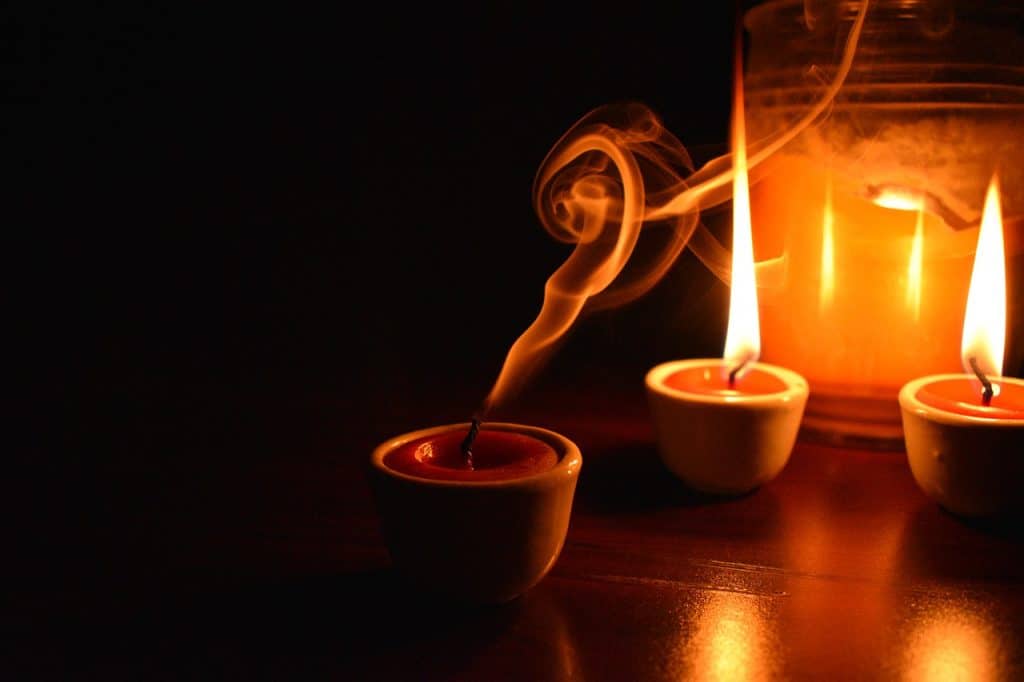Nowadays, there is an increasing demand for candles (due to the function they serve in the field of aromatherapy), and more and more people have begun to make their own.
The mere act of partaking in the art of candle-making can be a joy on its own. However, there is a lot of knowledge about candles and candle-making, which has been lost over time. At the same time, there are a lot of errors and mistakes that beginners may encounter in candle making. Wet spots are some of them.
WHAT ARE WET SPOTS?
Wet sports are air bubbles or empty spaces that are formed in a candle (especially within the container of poured candles), when wax draws away from the edge of the container. It typically occurs when hot wax is too hot, at the time of pouring (or when the candle wax is poured too fast), which may lead to the formation of air bubbles and shrinkage.
Usually, candle wax sticks to the surface of containers due to the occurrence of adhesion (of the wax to the surface of the container, which can be made from materials such as; aluminum, glass or ceramic). In order to preserve this adhesion, candle-makers (or chandlers) typically ensure that the wax continues to be in contact with the wall of the container while the candle is being poured (as this will help to prevent air bubbles from being formed). It is when this adhesion fails – i.e. when the wax no longer comes into contact with the container – that wet spots occur; because the wax has drawn itself away from the surface of the container.
Generally, wet spots tend to occur in very small areas of the candle, and may have little to no effect on the wax during the candle burning. But in extreme cases, things would not be the case (i.e. the effects of large wet spots on candles would be truly significant).
This phenomenon (i.e. wet spots) usually happens with paraffin wax. However, it can also happen with soy wax candles.
In order to avoid it completely, many candle makers who produce poured wax create their own additives and fortified wax blends; which have much better chances of forming no wet spots.

HOW CAN YOU FIX WET SPOTS IN SOY CANDLES?
In terms of science, wax contracts when cooling is taking place, and this may lead to the formation of air bubbles or the drawing away of the wax in regions where there are adhesion problems. The occurrence is essentially due to changes in wax temperature (because wax expands when it is hot, and contracts during cooling). Therefore, on this basis, it becomes clearer to see that wet spots don’t just occur during the candle making process. They may also be formed at any point in time, when there is notable temperature change that may cause the candle wax to expand and later contract.
To avoid this, special care should be taken during the process of candle making, as well as after. Candles should be properly stored, in cool and dry places (where there would be no risk of any unnecessary expansion and contraction). The process of preventing wet spots simply requires added or special attention to the temperature levels that candles are exposed to. And according to some experts, it is actually impossible to guarantee that you won’t have any wet spots in candles, at the end of the day (since you cannot account for every single situation that may lead to temperature change). But here are some other steps you can take to fix wet spots in soy candles:
- Clean your containers
Clean containers contain noticeably less dirt, and reduce the risk of wet spots in a candle, tremendously. You can clean your containers with hot water and dish soap. After cleaning, you have to make sure that the container is completely dry before pouring in your melted wax.
- Preheat your containers
It makes a great deal of difference to preheat your containers before pouring candle wax (especially after you have allowed the wax to cool slightly).

OTHER ERRORS THAT TYPICALLY OCCUR IN CANDLE MAKING
Apart from wet spots, there are other errors that candle makers should avoid (and many of these mistakes are rather common, particularly for new candle makers). Here are some of them:
- Using the wrong quantity of fragrance
Many new candle-makers struggle with the right measurements for fragrance, in the production of scented candles (the right measurements should be 1 ounce of fragrance for every 1 pound of wax). However, it is also important to know that fragrance should always be measured and added in according to weight (and not by volume).
- Burning the candle too quickly
Another mistake a lot of people make is that, after they have made their candle, they do not allow it to cool and solidify (i.e. cure) properly; before lighting it. This practice is very injurious to the health of the candle, and may affect its quality and structure in the long run. To prevent this, it is best to exercise patience and allow your candles to cure properly before use.
- Using the size of wick for every fragrance
The process of adding in the candle wick can be very tricky for new candle makers, especially since it is not always easy to find the right size of wick suitable for specific types of candles. Also, many people don’t know that the type of fragrance used also affects the size of the wick that should be used.
- Adding in unsuitable materials
A lot of people struggle to find the right ingredients or materials required to bring the candle of their dreams to life. And so, they may struggle with misinformation for a while. For example, when it comes to making colored candles, there are a lot of dyes around. But some beginners use crayons, which are unsuitable, because they have been subject to misinformation. This should be avoided at all cost, by taking the time to do your research, consult expert candle makers and sufficiently ensure that you are using the right materials in candle making.




